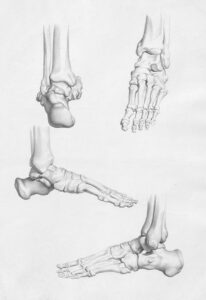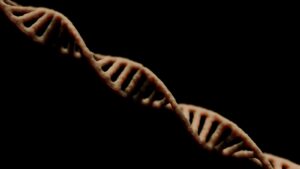Twins have long fascinated scientists, parents, and society as a whole. The birth of twins often sparks curiosity due to the inherent complexities of their conception and development. Typically, twins are categorized into two main types: identical (monozygotic), where one fertilized egg splits into two embryos, and fraternal (dizygotic), where two separate eggs are fertilized by two different sperm cells.
However, a third, incredibly rare type of twins exists: semi-identical twins, also known as sesquizygotic twins. Falling between identical and fraternal twins in terms of genetic similarity, these twins are a biological anomaly that occurs under highly specific and unusual circumstances. First discovered in humans in 2007, semi-identical twins share all of their mother’s DNA but only some of their father’s DNA.
This phenomenon provides fascinating insights into genetics, fertilization, and early embryonic development. In this comprehensive guide, we’ll explore semi-identical twins in detail, including their defining characteristics, how they occur, their rarity, and the scientific, social, and ethical implications of this unique form of twinning.
What Are Semi-Identical Twins?
Semi-identical twins, or sesquizygotic twins, occupy a unique middle ground between the more common categories of identical and fraternal twins.
- Identical twins result from a single fertilized egg (zygote) splitting into two embryos. Because they originate from the same egg and sperm, identical twins share 100% of their genetic material.
- Fraternal twins develop from two separate eggs fertilized by two different sperm cells, making them genetically distinct siblings who happen to share the same womb.
- Semi-identical twins occur when two sperm cells fertilize a single egg. The resulting zygote contains three sets of chromosomes (triploidy) instead of the usual two. This chromosomal imbalance is usually not viable for development, but in rare cases, the zygote corrects itself by discarding one set of paternal chromosomes. The corrected zygote then splits into two embryos, each inheriting identical maternal DNA but different paternal DNA.
This makes semi-identical twins genetically identical on their mother’s side but only partially identical on their father’s side, sharing about 50% of their paternal DNA. In terms of genetic similarity, they are closer than fraternal twins but not as identical as monozygotic twins.
How Does It Occur?
The process of semi-identical twinning is exceedingly rare and involves a sequence of unusual events during conception and early embryonic development. Let’s break it down step by step:
1. Hyperfertilization: Two Sperm, One Egg
Typically, during fertilization, a single sperm cell penetrates an egg, creating a zygote with the standard 46 chromosomes (23 from the egg and 23 from the sperm). However, in the case of semi-identical twins, two sperm cells fertilize the same egg almost simultaneously.
This results in a zygote with three sets of chromosomes (69 chromosomes total): 23 from the mother and 23 from each of the two sperm cells. This triploidy is usually incompatible with life and would normally result in early embryonic failure.
2. Chromosomal Correction
In rare cases, the triploid zygote undergoes a process called chromosomal correction to restore viability. During this process, one set of paternal chromosomes is discarded, leaving the embryo with the normal diploid chromosome number of 46.
This chromosomal correction is critical for the zygote’s survival and development. The retained paternal chromosomes can differ across embryonic cell lines, creating two distinct genetic profiles within the zygote.
3. Embryonic Splitting
After chromosomal correction, the zygote splits into two separate embryos, each with its own unique combination of paternal DNA but identical maternal DNA. These embryos then develop independently, leading to the birth of semi-identical twins.
4. Implantation and Development
Once the embryos implant in the uterus, their development proceeds similarly to other types of twins. They share the same uterine environment but have distinct genetic profiles due to their different paternal DNA contributions.
How Rare Are Semi-Identical Twins?
Semi-identical twinning is one of the rarest known phenomena in human reproduction. While identical and fraternal twins occur in approximately 3% of pregnancies, semi-identical twins are so rare that only a handful of cases have been confirmed worldwide.
Factors Contributing to Rarity
- Uncommon Fertilization Event: The simultaneous fertilization of one egg by two sperm cells is an extremely rare occurrence, as biological mechanisms typically prevent more than one sperm from penetrating the egg.
- Chromosomal Correction: Even if two sperm fertilize the same egg, the resulting triploid zygote is usually non-viable. The process of chromosomal correction is rare and not well understood.
- Limited Detection: Many cases of semi-identical twinning may go undetected unless genetic testing is conducted, as their physical appearance may not always raise suspicion.
Documented Cases
The first documented case of semi-identical twins was reported in 2007 in the United States. Genetic testing revealed that the twins shared identical maternal DNA but only partially identical paternal DNA. A second confirmed case was reported in Australia in 2019, involving a boy and a girl, making it clear that they could not be identical twins. These rare cases underscore the unique biological processes involved in sesquizygotic twinning.
Identifying Semi-Identical Twins
Semi-identical twins are not always immediately recognizable, as their physical characteristics can vary significantly depending on the genetic contributions from their fathers. Here are the key ways to identify them:
1. Genetic Testing
DNA testing is the definitive method for identifying semi-identical twins. Standard genetic analyses can determine that the twins share 100% of their maternal DNA but only 50% of their paternal DNA, confirming their sesquizygotic status.
2. Physical Differences
Semi-identical twins may exhibit distinct physical traits, such as differences in skin tone, hair color, or eye color, especially if their fathers are of different ethnic backgrounds.
3. Unusual Medical Conditions
In some cases, semi-identical twinning may be discovered due to medical anomalies. For example, one twin may develop differently or present with chromosomal abnormalities, prompting genetic investigation.
Biological and Genetic Implications
1. Unique Genetic Makeup
Semi-identical twins provide a fascinating genetic profile, sharing identical maternal DNA but differing partially in their paternal DNA. This unique genetic makeup offers researchers a rare opportunity to study how genetic variations influence development, health, and physical traits.
2. Insights into Fertilization and Embryology
The study of semi-identical twins sheds light on the mechanisms of fertilization, chromosomal correction, and embryonic development. Understanding these processes can have broader implications for reproductive medicine and genetic research.
3. Health Considerations
Because semi-identical twins inherit different sets of paternal DNA, they may have varying health risks or predispositions to genetic conditions. Medical monitoring and genetic counseling can help address these potential challenges.
Real-Life Cases of Semi-Identical Twins
Case 1: 2007 Discovery in the United States
The first confirmed case of semi-identical twins was identified during a routine medical examination. Genetic testing revealed their unique genetic composition, sparking scientific interest in this rare phenomenon.
Case 2: 2019 Australian Twins
A boy and a girl born in Australia were confirmed as semi-identical twins after genetic testing showed they shared identical maternal DNA but had different paternal DNA. This case highlighted the importance of genetic testing in uncovering rare twinning events.
Ethical and Social Implications
1. Parental Understanding
Parents of semi-identical twins may face unique challenges in understanding and explaining their children’s genetic relationship. Genetic counseling can help families navigate these complexities.
2. Ethical Considerations in Research
Studying semi-identical twins raises ethical questions about privacy, consent, and the potential use of genetic information. Researchers must balance the pursuit of knowledge with respect for individual rights.
3. Implications for Assisted Reproductive Technology
The study of semi-identical twins can inform advancements in assisted reproductive technologies, such as in-vitro fertilization (IVF), by improving our understanding of fertilization and embryonic development.
Conclusion
Semi-identical twins, or sesquizygotic twins, represent one of the rarest and most extraordinary phenomena in human reproduction. Falling between identical and fraternal twins in terms of genetic similarity, they provide unique insights into the complexities of fertilization, genetics, and embryology.
While rare, the study of semi-identical twins has significant implications for science, medicine, and society. Their existence highlights the intricate and often surprising processes that govern human reproduction, offering a deeper appreciation for the diversity of life. As research continues, semi-identical twins may unlock new understanding about genetics and embryonic development, paving the way for advancements in reproductive health and medicine.




